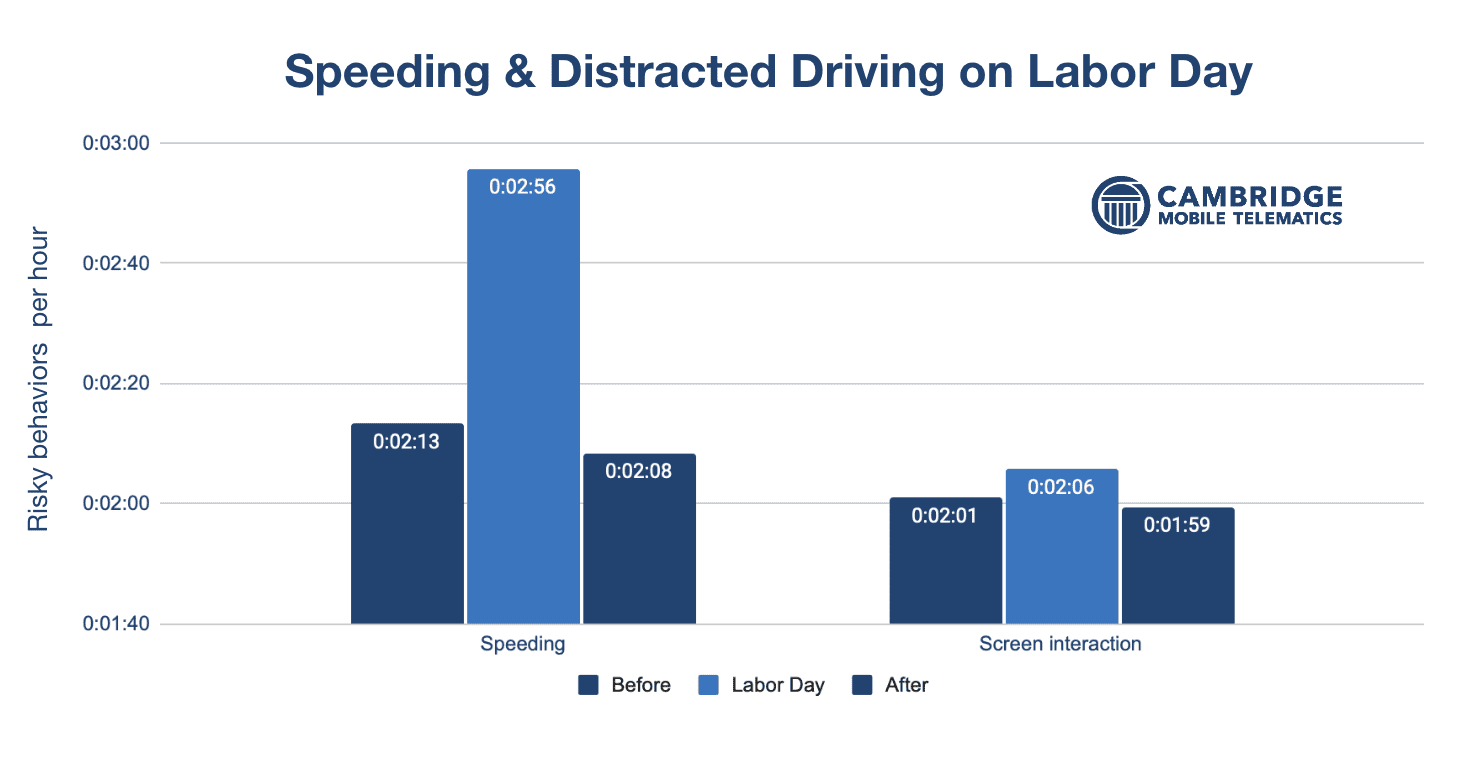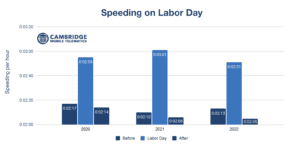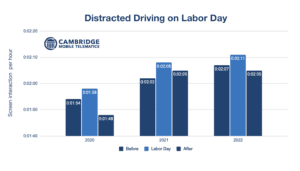Road Risk Alert: Labor Day Sees Heightened Distracted Driving and Speeding

Labor Day weekend marks the unofficial end of summer. Many Americans hit the roads for one last summer trip. In fact, CMT’s data shows that the average trip length increases on Labor Day by 5%, nearly 50 seconds more.
Like July 4th and other holidays with increased travel, Labor Day sees heightened levels of risky behaviors like speeding and distracted driving.
To understand the level of risk US drivers will face on Labor Day this year, we analyzed distracted driving and speeding trends the 30 days before and after Labor Day from 2020 through 2022, spanning 20 million trips.
Labor Day sees a 34% increase in speeding
On the average day 30 days before and after Labor Day, US drivers spend 2 minutes and 11 seconds speeding every hour they’re driving. Labor Day sees a 34% increase, rising to 2 minutes and 56 seconds.
Every year since 2020 follows the same speeding pattern around Labor Day. The time drivers spend speeding 30 days before Labor Day has averaged 2 minutes and 13 seconds. After the spike on Labor Day, as summer ends and school begins across the country, speeding falls slightly to 2 minutes and 8 seconds.

In 2020 and 2021, speeding during Labor Day jumped substantially. In 2020, speeding increased by 38 seconds, rising to 2 minutes and 55 seconds per hour. In 2021, it surpassed 3 minutes, a 41% increase. 2022 followed similar patterns.
Distracted driving increases by 4.6% on Labor Day
Screen interaction, where drivers are texting, emailing, changing a song, scrolling through social media, taking a video call, etc., also increases on Labor Day. Screen interaction on the days surrounding Labor Day averages 2 minutes and 1 second per driving hour. On Labor Day, screen interaction jumps to 2 minutes and 6 seconds, a 4.6% rise.
The increase in screen interaction has severe and fatal consequences. CMT’s research shows that for every 10% increase in distracted driving, the crash rate increases by 1.4%. We estimate that the 4.6% increase in distracted driving on Labor Day has resulted in 750 additional crashes, 3 fatalities, and $18 million in economic damages over the past three years.*

Screen interaction follows a similar annual pattern to speeding. It surges on Labor Day and then falls to lower levels in September. The one exception was in 2021 when screen interaction remained higher in September than in August.
Screen interaction has increased on Labor Day every year since 2020. Labor Day 2022 saw 2 minutes and 11 seconds of screen interaction, 11% higher than 2020.
A deadly trend
The National Safety Council provides a fatality estimate for many major holidays. In 2022, it estimated that over 450 people would be killed on the road during Labor Day weekend. In 2020, the last year it has data on Labor Day fatalities, 506 people were killed. The increase in distracted driving and speeding contributes to these roadway tragedies.
Leave early to avoid risky driving
What can drivers do to minimize their risk? Experts say the best time to drive over Labor Day weekend is in the early morning or evening hours. CMT’s 2022 Distracted Driving Report shows that early morning driving, from 6:00 am to 9:00 am, has the lowest level of distracted driving.
*Estimates based on the change in crash rate from distracted driving and data from NHTSA’s report The Economic and Societal Impact of Motor Vehicle Crashes, 2019: $340 billion in crash damages from 14.2 million crashes in 2019, averaging $23,954 per crash.